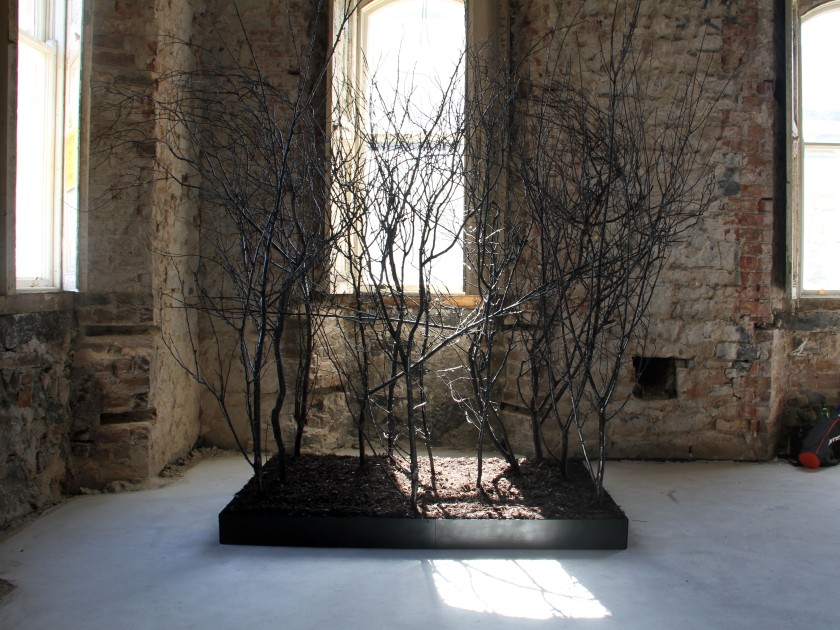I began this semester by looking at the way people look back on their memories and how our personal experiences affect our perception, this led to my exploration of how we experience the environment around us. I took stock images of different environments - the seaside, mountains, forests, city, etc. and by layering and slicing the images I created hybrid environments. 
From these Images I developed paintings where I subtracted different areas of information to experiment with what is really needed to construct an environment. started taking my own pictures of various places and then printing them out and physically placing them in a setting which is quite opposite
This exploration of elements needed to create an environment made me consider not only
what visual queues are needed but also to look at the role that smell, touch, taste and sound
play. If, for example, you are in a dark room with only the sound of wind blowing through
branches, would you relate that to a forest or a perhaps the trees in a park. Your own
experiences help you to relate some of the information given and to build a scenario for
yourself. What if only visuals were left? If they were stripped down to their basic composition,
so only silhouettes remained, would that be enough? Do we only really need an impression
of an environment and our minds can construct the rest??

My work for the exhibition in the Sailor's home 'Processed Territory' is broken down into its
most basic structure - no smell, no colour, no sound, just shape. It is an impression of a
forest, the branches have been stripped and painted a glossy black, only the soil at the base
of the trees showing any hint of the other senses. With all this alterations for the forest, is it
still the same environment that it was in its original state. How much can we manipulate
something and still have it retain its innate form?